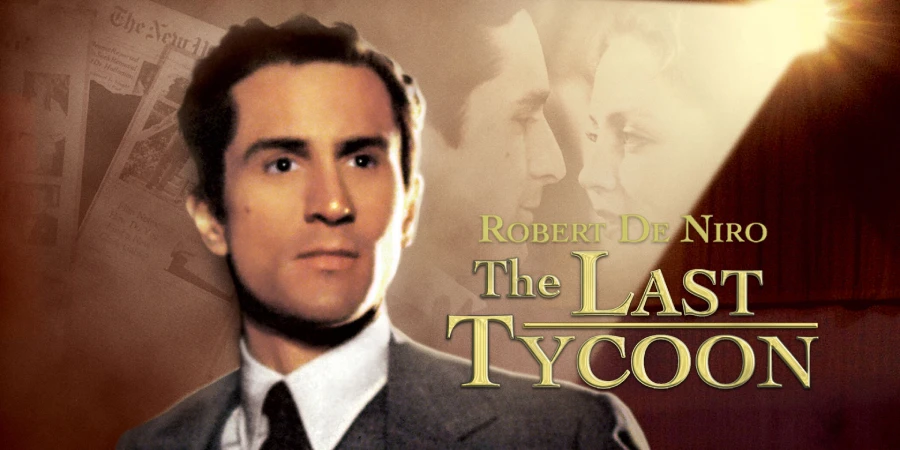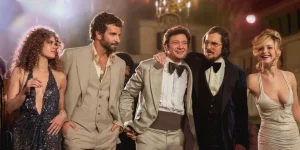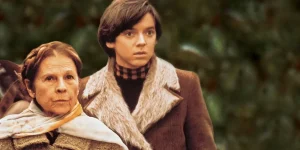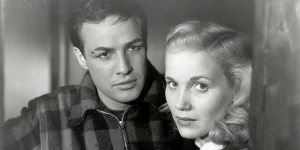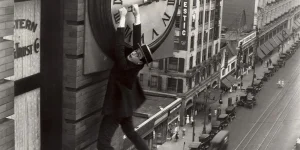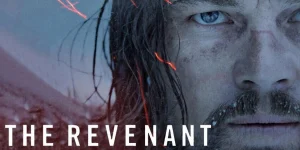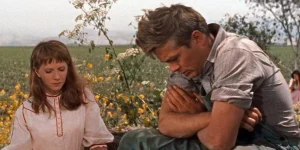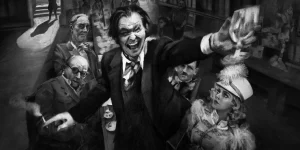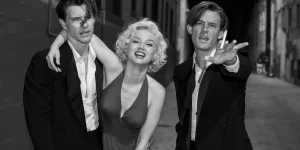Elia Kazan’s final film, The Last Tycoon (1976), is a fascinating adaptation of F. Scott Fitzgerald’s unfinished novel. With Harold Pinter’s screenplay and a powerhouse cast led by Robert De Niro, the film offers a sharp look at Hollywood’s Golden Age—its glamour, corruption, and the people trapped within it.
Table of Contents
ToggleDetailed Summary
Hollywood in the Golden Age
The film is set in 1930s Hollywood, focusing on Monroe Stahr (Robert De Niro), a brilliant and obsessive studio executive who is loosely based on Irving Thalberg, the “Boy Wonder” of MGM. Stahr lives and breathes movies, shaping the dreams of millions, but behind the camera’s glow, his life is lonely and burdened with creative and personal struggles.
The Genius of Monroe Stahr
We see Stahr as both ruthless and sensitive—he’s a perfectionist who clashes with producers, writers, and even union organizers, yet he’s also a man driven by passion for storytelling. His devotion to the studio makes him both admired and resented. His interactions reveal the pressures of keeping the dream machine running, all while maintaining a sense of personal artistic integrity.
The Love Affair
A key thread in the film is Monroe’s encounter with Kathleen Moore (Ingrid Boulting), a mysterious young woman who reminds him of his late wife. Their relationship is intense but troubled, as Kathleen is engaged to another man. Monroe, deeply infatuated, pursues her with all the romantic desperation of someone who senses his time and happiness are slipping away.
Power Struggles
Behind the love story lies the darker reality of Hollywood politics. Stahr’s authority is challenged by board members and writers, especially Brimmer (Jack Nicholson), a union activist who becomes both a professional and personal rival. These confrontations emphasize the growing conflict between creative passion and business interests in the movie industry.
Movie Ending
The film ends on an ambiguous yet tragic note. Monroe’s personal and professional life spirals as his obsession with Kathleen consumes him. He pleads for her to leave her fiancé and be with him, but she resists, torn between loyalty and passion. In one of the film’s most memorable final sequences, Monroe delivers a haunting monologue in an empty studio, reflecting on life, ambition, and the fleeting nature of power. The movie doesn’t give a “complete” resolution—mirroring Fitzgerald’s unfinished novel—but it leaves us with the clear impression that Monroe is a doomed figure. His genius is undeniable, but his loneliness and obsession ensure he will never find lasting happiness.
Are There Post-Credits Scenes?
No. Like most films of the 1970s, The Last Tycoon does not have a post-credits scene. The film closes traditionally with end credits only.
Type of Movie
The film is a romantic drama with elements of Hollywood satire. It blends love, ambition, and behind-the-scenes intrigue into a reflective, melancholic story.
Cast
- Robert De Niro as Monroe Stahr
- Ingrid Boulting as Kathleen Moore
- Jack Nicholson as Brimmer
- Robert Mitchum as Pat Brady
- Jeanne Moreau as Didi
- Tony Curtis as Rodriguez
- Donald Pleasence as Boxley
- Ray Milland as Fleishacker
Film Music and Composer
The score was composed by Maurice Jarre, whose lush, romantic orchestrations add an emotional weight to the story. His music emphasizes both the glamour of old Hollywood and the melancholy of Monroe’s personal struggles.
Filming Locations
The movie was filmed primarily in Los Angeles and Hollywood studios, giving it authenticity in depicting the world of 1930s filmmaking. Real studio backlots and period-accurate sets were used to immerse viewers in the behind-the-scenes world of Golden Age cinema.
Awards and Nominations
While The Last Tycoon did not win major awards, it did receive some recognition:
- Nominated for Best Art Direction at the Academy Awards (1977).
- Nominated for a BAFTA Award for Best Cinematography.
Despite its star-studded cast and Kazan’s direction, the film was not a major critical or commercial success.
Behind the Scenes Insights
- This was Elia Kazan’s final film before his retirement.
- De Niro, already famous for Taxi Driver, prepared extensively by studying the mannerisms of Irving Thalberg.
- Harold Pinter’s screenplay adapted Fitzgerald’s unfinished novel, leaving many gaps that made the ending feel deliberately unresolved.
- Several big Hollywood names were considered for Kathleen’s role before Ingrid Boulting was cast.
Inspirations and References
The film is directly based on F. Scott Fitzgerald’s unfinished novel of the same name. Fitzgerald drew inspiration from Irving Thalberg, the legendary MGM producer, capturing the rise and fall of a Hollywood genius whose life was as tragic as it was brilliant.
Alternate Endings and Deleted Scenes
Because Fitzgerald’s source material was unfinished, Kazan and Pinter had to craft a workable ending. There are reports of deleted scenes expanding Monroe’s relationship with Kathleen, but no fully different ending was filmed. The ambiguity of the ending was intentional, honoring the incomplete nature of the novel.
Book Adaptations and Differences
The movie closely follows Fitzgerald’s novel but simplifies many subplots. The book spends more time on Hollywood’s internal politics and Monroe’s decline, while the film emphasizes the romance with Kathleen. The ending, of course, is an interpretation, since Fitzgerald never finished his manuscript.
Memorable Scenes and Quotes
Key Scenes
- Monroe walking alone through the studio lot at night, reflecting on his life.
- The confrontation between Monroe and Brimmer about power, unions, and truth.
- Monroe’s passionate declaration to Kathleen, begging her to choose him.
Iconic Quotes
- Monroe Stahr: “There are no second acts in American lives.” (A nod to Fitzgerald’s famous line.)
- Brimmer: “You think you can own everything, but some things don’t belong to you.”
- Monroe Stahr: “All I’ve ever had is work. And even that’s slipping away.”
Easter Eggs and Hidden Details
- Monroe Stahr’s character traits—youthful genius, frailty, obsession with work—are direct references to Irving Thalberg.
- The film subtly nods to Fitzgerald’s own struggles in Hollywood as a screenwriter.
- The “unfinished” feel of the film is deliberate, mirroring the incomplete novel.
Trivia
- This was Elia Kazan’s only collaboration with Robert De Niro.
- Jack Nicholson’s role as Brimmer was added to give more narrative tension—he does not appear in Fitzgerald’s novel.
- The production faced tension between Kazan’s old-school directing style and De Niro’s method acting approach.
- Ingrid Boulting’s casting was controversial, as some critics felt she lacked the screen presence to match De Niro.
Why Watch?
Watch this film if you love:
- Old Hollywood stories about ambition, corruption, and romance.
- Robert De Niro in one of his most restrained, nuanced roles.
- Elia Kazan’s signature directing style, full of introspection and human fragility.
- A literary adaptation that honors F. Scott Fitzgerald’s unfinished masterpiece.
Director’s Other Movies
- A Streetcar Named Desire (1951)
- On the Waterfront (1954)
- East of Eden (1955)
- America America (1963)
- The Arrangement (1969)
Recommended Films for Fans
- Chinatown (1974)
- Sunset Boulevard (1950)
- The Aviator (2004)
- Once Upon a Time in Hollywood (2019)
- The Day of the Locust (1975)

